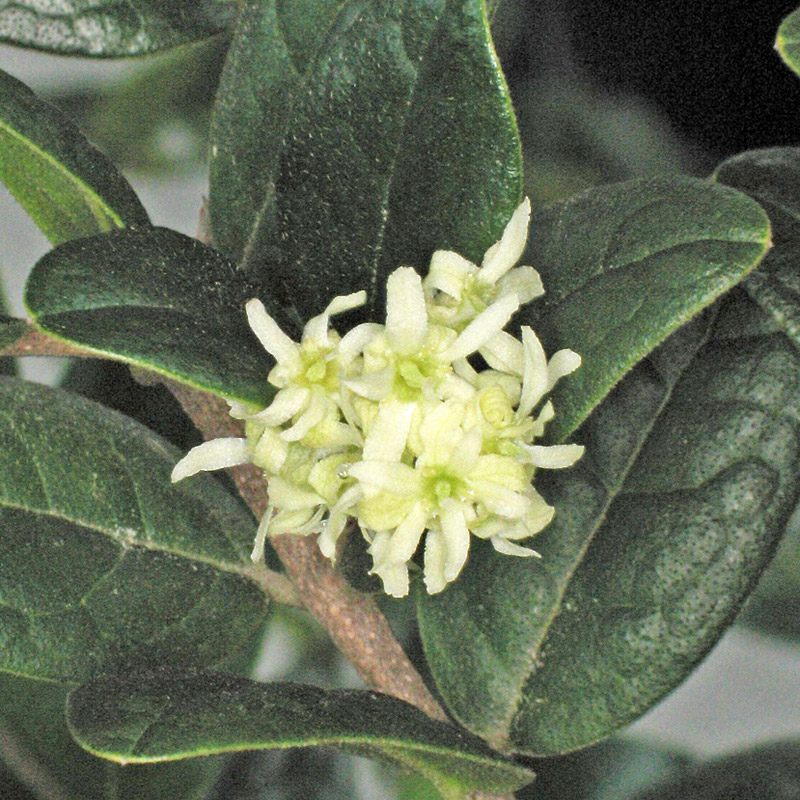Botanical name
Peumus boldus Molina
Family
Monimiaceae
Common name
Boldo
Information about the plant
The biennial Boldo shrub is the only representative of the Boldo genus. It is native to central Chile and Peru from the 30th to the 41st parallel, where it forms dense bush forests. It is also found naturalized in mountainous Mediterranean regions and on the west coast of North America.
The evergreen boldo shrub grows up to 6 m high and has thick, leathery, whole-edged leaves with a strong, spicy scent. The leaf edge is slightly curled downwards, and the upper surface of the leaf is covered with small, warty bumps. The white, bell-shaped flowers form clusters. After fertilization, small yellowish-green, edible berries grow. The flowering time is during the South American winter (June to August).
Medicinally used parts of plants (herbal drug)
Only the leaves (boldo leaves - boldi folium) are used.
The commercially available drug comes from Chile.
Constituents of the herbal drug
Boldo leaves contain essential oil, aporphine alkaloids (main alkaloid boldine), and flavonoids.
Quality of the drug
The quality of the following drugs or drug preparations is specified in the European Pharmacopoeia (Ph. Eur.):
- Boldo leaves (Boldi folium)
- Boldo leaf dry extract (Boldi folii extractum siccum)
Medical applications
Recognised medical use
The HMPC has classified boldo leaves as a traditional herbal medicinal product (see “Traditional use”).
ESCOP: For mild hepatobiliary dysfunction and for the symptomatic treatment of mild digestive complaints.
Traditional use
Boldo leaves have been classified by the HMPC as a traditional herbal medicinal product (Article 16a of Directive 2001/83/EC). The HMPC concluded that, based upon long-standing use, these boldo leaf preparations can be used for the relief of symptoms of dyspepsia (indigestion) and mild spasmodic disorders of the gastrointestinal tracts.
Herbal drug preparations in finished dosage forms
- Cut boldo leaves for the preparation of a tea
- Dry extracts in tablets and capsules
- Tincture in liquid preparations
- Liquid extract
Dosage
Finished medicinal product: see patient information leaflet.
Tea: drink a cup of warm boldo leaf tea 2 to 3 times a day; daily dose: 4.5 g drug.
Preparation of a tea
Pour 150 mL of boiling water over 1 to 2 g of cut boldo leaves and strain after 10 to 15 minutes.
Notes
Medical consultation must be taken in cases of biliary obstruction, gallbladder inflammation, gallstones, and other biliary diseases, as well as liver diseases.
No safety studies are available on the use of boldo leaves during pregnancy and lactation; use in children and adolescents under the age of 18 is not recommended due to a lack of evidence.
Side effects
Allergic symptoms may occasionally occur.
Interactions
None known.
References
Herbal drug monographs
Further literature
Commentary on the European Pharmacopoeia (Boldo leaves, No. 1396; Boldo leaf dry extract, No. 1816)


